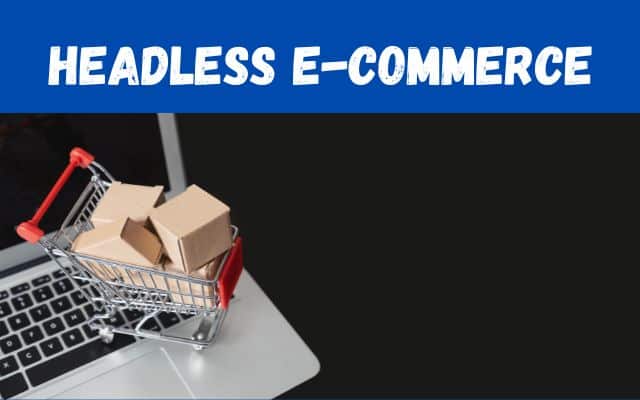Demystifying Headless E-commerce – A Comprehensive Guide

Let’s check out Headless E-commerce : Ever browsed an online store and felt amazed by its swift responsiveness and unique design? There’s a chance that behind that seamless experience lies the power of headless e-commerce. But before we dive into the world of “headless,” let’s take a quick flashback to our good old traditional e-commerce systems and see how things have evolved.
What Is Headless E-Commerce?
Alright, here’s the scoop: imagine your favorite online shop. The part you see and interact with – product pages, checkout, and more – that’s the “head.” The behind-the-scenes bits, where all the product data and business logic sit, can be thought of as the “body.” Now, in traditional e-commerce, the head and body are intrinsically connected. They’re, for lack of a better word, attached at the hip.
Headless e-commerce is a bit like a magician’s act, where the head (frontend) is separated from the body (backend). This decoupling allows businesses to work on and update the frontend without messing with the backend, offering unmatched flexibility.
Why Is Headless E-commerce Gaining Traction?
Well, for starters, we, as customers, have become pretty demanding. We want fast, we want mobile, and, above all, we want personalized. Brands are under pressure to deliver unique, tailored shopping experiences, and this is where the flexibility of headless e-commerce shines. That’s why companies that offer headless commerce and a SAP commerce storefront have their hands and plates full, helping businesses expand and cater to their clients with the support of headless e-commerce.
Moreover, the ever-expanding avenues for selling – websites, mobile apps, social media platforms, smart devices – call for an adaptable system. Enter headless e-commerce, which allows businesses to push content seamlessly across multiple channels, adapting to the rise of omnichannel selling.
Key Benefits of Headless E-commerce
So, why are businesses all over the world making the leap to headless? Let’s unravel the perks:
- Enhanced User Experiences. Without the constraints of a preset frontend, brands can craft unique, lightning-fast user experiences tailored to their audience.
- Faster Time-to-Market. Updates, campaigns, and product launches can be rolled out more quickly since the frontend operates independently.
- Scalability & Flexibility. As your business grows, so does your platform. And if a new, shiny tool emerges? Integrate without a hitch!
- Seamless Integrations. Thanks to APIs, you can smoothly integrate with other systems, from CRM tools to payment gateways.
Potential Drawbacks and Considerations
Hold the phone; it’s not all roses! Transitioning to headless e-commerce can come with its share of hiccups.
- Complexity in Setup. It’s like assembling a puzzle; it requires more upfront effort and might need specialized skills.
- Higher Initial Costs. Customization freedom can sometimes come with a heftier price tag.
- Is it right for every business? If you’re a smaller business with straightforward needs, traditional e-commerce might be your best bet.
Is Headless E-commerce Suitable for All Types of Businesses, Including Small Ones?
Headless e-commerce provides flexibility and customization, making it a great fit for businesses of all sizes.
For larger enterprises, the adaptability of headless solutions means they can easily integrate with various systems, helping them maintain a cohesive and cutting-edge online presence. For smaller businesses, the modular nature of headless e-commerce can be a boon because they can pick and choose functionalities based on their specific needs and budget constraints.
Additionally, as their business grows, they can seamlessly add features without overhauling their entire system. However, it’s essential for small businesses to assess their technical capabilities and resources. If they lack in-house expertise, they might need external support to manage and maintain a headless setup.
Getting Started with Headless E-commerce
Feeling a tad overwhelmed? No worries. Here’s a cheat sheet to get started:
- Determine Your Needs. Audit your current system. What’s lacking? What do you wish you had?
- Choose the Right Platform. Not all platforms are created equal. Do your homework.
- Implementation Best Practices. Engage experts if needed, plan meticulously, and test, test, test before going live!
Conclusion
E-commerce, like all things digital, is ever-evolving. While headless e-commerce might sound like a fancy buzzword today, its benefits are making it a staple for businesses aiming to scale and adapt in an unpredictable digital landscape. It’s all about crafting exceptional, memorable shopping experiences for users.
Whether headless is the right route for you or not, keeping customer experience at the forefront is the true north star. So, happy selling, and may your user journeys always be seamless!






